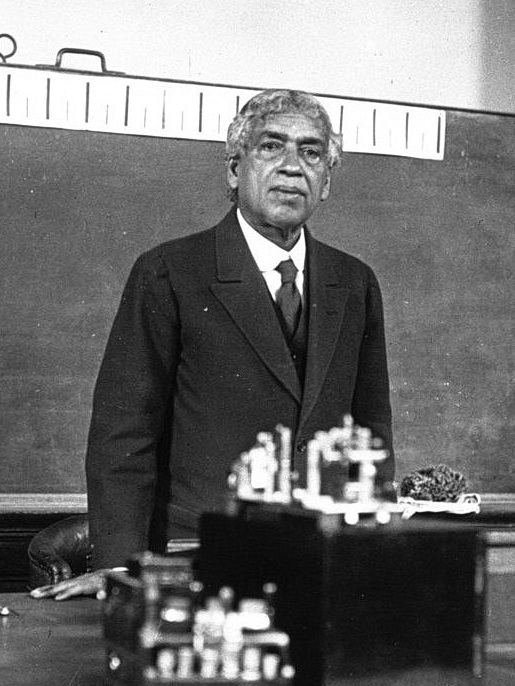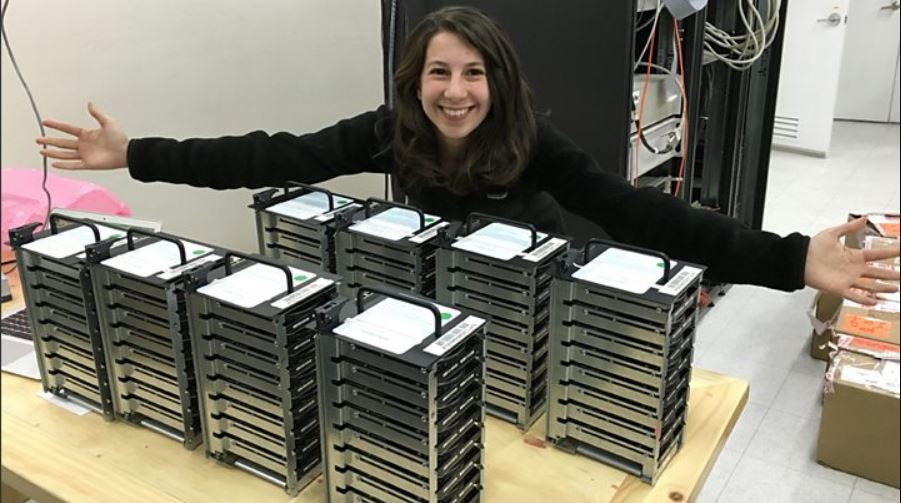First Images Of a Black Hole: This Indian’s 120-YO Experiment Helped Capture It!
A black hole is a mysterious place in space with such enormous mass and gravity that nothing can escape it. Not even light.

On April 10, 2019, a team of 200 astronomers created history after they released the first ever images of a black hole.
Dr Katherine Bouman, a 29-year-old post-doctoral fellow at MIT was lauded across the world for being instrumental in the creation of the algorithm that helped produce this image.
The deal with Black Holes
A black hole is a mysterious place in space with such enormous mass and extreme gravity that nothing can escape it. Not even light. As light does not get out, black holes are invisible.
Black holes emerge from Einstein’s theory of general relativity, with names of eminent physicists like Karl Schwarzschild and David Finkelstein attached to their detection. While several artists have tried to create images of what these cosmic sinkholes look like, this is the first visual evidence of a supermassive black hole.
Located at the center of the Messier 87 galaxy, it is 500 million trillion km away from the Earth and is 3.3 million times the size of earth!
What did the image show?

The image reveals a ring-like structure with a dark centre. This ring-like boundary is termed as the event horizon. It is 2.5 times smaller than the shadow it casts and measures 40 billion km across.
Event Horizon is the region around the centre of the black hole from where no matter and energy can escape. It is also known as the ‘point of no return.’
The shadow of the Messier 87 black hole is being called supermassive. Why? It has a mass of about 6.5 billion times the mass of the Sun!
How did the astronomers capture the image?
The team of 200 astronomers created a network of ten radio telescopes which were synchronised by technology, so as to function as an Earth-sized virtual observatory called the Event Horizon Telescope (EHT).
Speaking to Indian astrophysicist and science writer, Dr Aswin Sekhar for The Quint, Prof Tapas Kumar Das, the only Indian physicist who works on black hole shadow imaging said, “Because of its very large wavelength, the size of a radio telescope to resolve such a tiny angular structure should be extremely large, effectively of the order of 5000 kilometers, and such a huge single telescope is impossible to construct. Scientists, however, created an effective earth sized telescope by using an array of radio telescopes located at various sites of the Earth.”
According to The Telegraph, the EHT network telescopes in Hawaii, Mexico, Spain, Chile, and Antarctica exploited the Earth’s rotation to serve as a single giant telescope that can discern regions of space just 15 to 20 micro-arcseconds, the equivalent of trying to spot a golf ball on the moon.
All said and done, did you know this image of the black hole also has an Indian connection that dates back to 120 years?
The Indian connection

India may not be a part of the EHT network, but the hundreds of gigahertz frequencies that these radio telescopes operated on were first generated by Bose in experiments in Calcutta in 1895.
Speaking to The Telegraph, Somak Raychaudhury, the director of the Inter-University Centre for Astronomy and Astrophysics, Pune said, “The telescopes are technologically very sophisticated, but they use the same core technology demonstrated by Bose,” said
The report also adds that a host of hard disks with petabytes of storage had to be transported by air between different countries for the project, since the data storage required for these images was astronomical and it was not practical to transfer such a large amount of data through the internet.

The Chandrasekhar Limit
Dr Aswin Sekhar also adds the contribution of Nobel Prize-winning Indian American astrophysicist S Chandrasekhar who predicted the mass at which star could or could not collapse into a black hole.
Known as the ‘Chandrasekhar Limit,’ this limit in astrophysics stipulates that a star’s mass when 1.4 times lighter than the sun, eventually collapses into a denser stage called a “white dwarf.” When heavier than 1.4 times, a white dwarf can continue to collapse and condense, evolving into a black hole or a supernova explosion.
You May Also Like: Patna Teen’s Research on Black Holes Gets Him Elected to UK’s Royal Astronomical Society!
What next?
The astronomers are now working on getting more telescopes to join the EHT network to get more high-resolution images of black holes. The findings of the EHT team will be described in six papers in The Astrophysical Journal.
And we couldn’t help but agree with Kazunori Akiyama, co-leader of the EHT imaging group at the Massachusetts Institute of Technology who said: “This is the dawn of a new era of black hole astrophysics.”
(Edited by Saiqua Sultan)
Like this story? Or have something to share?
Write to us: [email protected]
Connect with us on Facebook and Twitter.
If you found our stories insightful, informative, or even just enjoyable, we invite you to consider making a voluntary payment to support the work we do at The Better India. Your contribution helps us continue producing quality content that educates, inspires, and drives positive change.
Choose one of the payment options below for your contribution-
By paying for the stories you value, you directly contribute to sustaining our efforts focused on making a difference in the world. Together, let’s ensure that impactful stories continue to be told and shared, enriching lives and communities alike.
Thank you for your support. Here are some frequently asked questions you might find helpful to know why you are contributing?


This story made me
-
97
-
121
-
89
-
167













